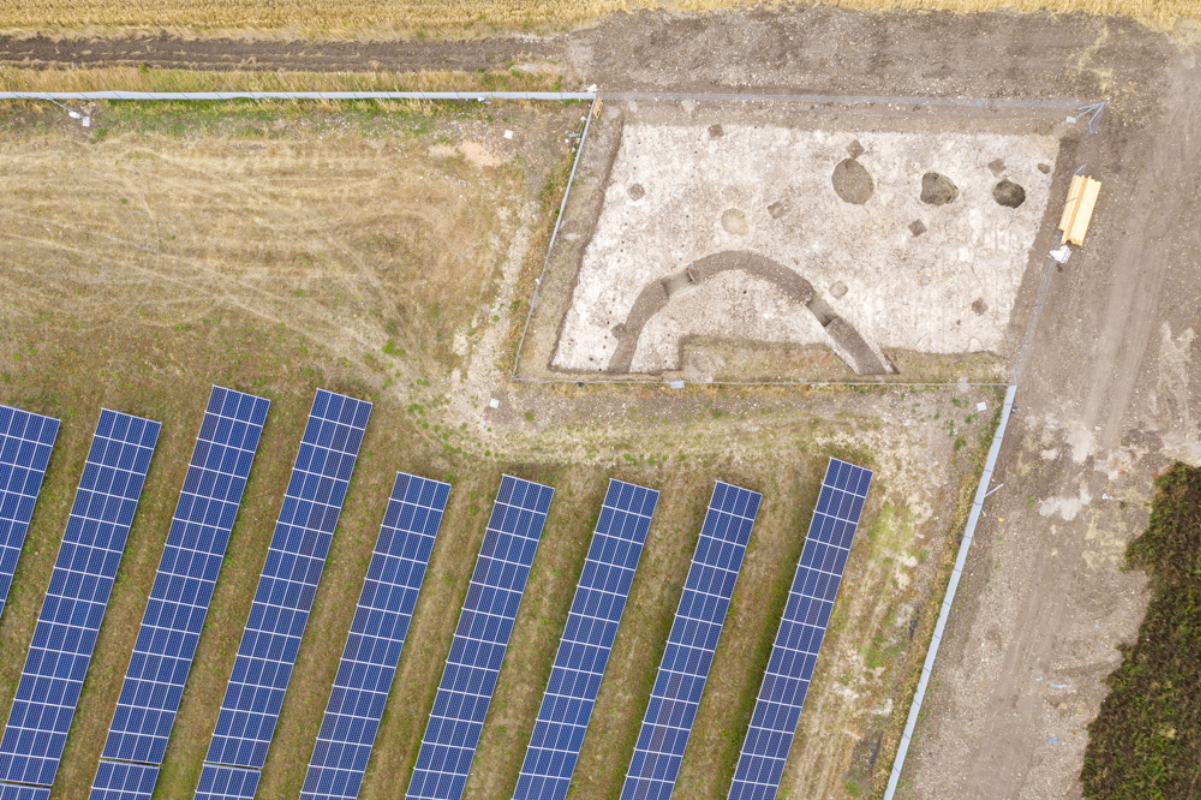The draft planning policy paper about renewable energy infrastructure which is being drawn up by the U.K. government has outlined another potential benefit offered by solar projects, on top of the well-documented biodiversity gains such sites can offer.
The section of the renewables paper devoted to solar, which was put out for consultation yesterday, noted: “Archaeological finds may be protected by a solar PV farm as the site is removed from regular plowing and ‘shoes', or low-level piling, is stipulated.”
The paper was published less than a week after Danish renewables developer European Energy announced it had donated almost €1 million to finance a dig next to the site of Italy's largest PV project, after a survey connected to the solar farm unearthed the remains of an early-to-middle neolithic settlement, and a basilica.
pv magazine print edition
The U.K. draft policy document is part of a suite of papers which will guide how energy infrastructure should be planned in England and Wales – and also Scotland, in the case of cross-border pipelines. With the guidance related to energy projects big enough to require central government consent – under the nationally significant infrastructure projects (NSIP) regime – dating from 2011, the U.K.'s Department for Business, Energy and Industrial Strategy (BEIS) wants to update policy with a net-zero 2050 in mind.
The significant change proposed for solar is that project scale be determined by total inverter capacity, in alternating current terms, rather than by the current method of measuring the generation capacity, in direct current, of the panels on a site. The thresholds under which projects enter the NSIP planning regime are unchanged, and apply to solar farms bigger than 50 MWac in England, and larger than 350 MW in Wales.
In addition to highlighting the archaeological gains which may be offered by PV, the draft policy document concerned with solar – which will be open to consultation until November 29 – also noted potential biodiversity and water management benefits at solar sites, and dismissed the myth about airplane pilots being affected by glare from panels.
“Solar farms have the potential to increase the biodiversity value of a site, especially if the land was previously intensively managed” stated the document, adding: “Solar sites can deliver existing ecosystem services value in the form of drainage, flood attenuation, natural wetland habitat, and water quality management.”
On glare, the BEIS draft policy paper said: “There is no evidence that glint and glare from solar farms interferes in any way with aviation navigation or pilot and aircraft visibility or safety.”
Panel assumptions
The planning guidance paper based its suggestions on the assumption typical solar panels would be around 2m2, have an output of 450 W each and would require around 2-4 acres per megawatt capacity of sites. Panels would be assumed to lose 1% of their performance annually through degradation and would have a 25-30 year lifespan, leading to planning authorities to grant a typical time limit of 25 years for a solar farm.
An archaeological dig financed by Danish clean power company European Energy unearthed archaeological treasures including ceramics, coins, bracelets, rings and buckles dating from the Daunian period of occupation at the site in Troia, Apulia where the developer's 103 MW solar project is generating power for sale on the spot market. The project is set to sell electricity to the Italian unit of Swiss energy company Axpo and is trading on the open market while it awaits closure of the power purchase agreement.
This content is protected by copyright and may not be reused. If you want to cooperate with us and would like to reuse some of our content, please contact: editors@pv-magazine.com.




1 comment
By submitting this form you agree to pv magazine using your data for the purposes of publishing your comment.
Your personal data will only be disclosed or otherwise transmitted to third parties for the purposes of spam filtering or if this is necessary for technical maintenance of the website. Any other transfer to third parties will not take place unless this is justified on the basis of applicable data protection regulations or if pv magazine is legally obliged to do so.
You may revoke this consent at any time with effect for the future, in which case your personal data will be deleted immediately. Otherwise, your data will be deleted if pv magazine has processed your request or the purpose of data storage is fulfilled.
Further information on data privacy can be found in our Data Protection Policy.